Many of us sell our finished projects and a primary outlet are the arts and craft shows in our local area. How you mentally approach those shows can determine whether a show is a success or a flop for you as a business person. For many years I did the craft show circuit and I would like to share my experiences in this posting. Hopefully you will find a few ideas that you can use to make your business grow.
Any business strategy or marketing website will tell you that first and foremost you need to create a Business Plan, but what does that really mean for the art and craft show artisan who does wood carving or pyrography?
Who, What, Where, When, and Why! These are the five basic questions you need to answer for any business planning. Let’s take a few minutes today and look specifically at what a business plan for selling shows might include as we answer a few of those basic questions. I know that you have already gone through these questions with the standard business approach, but let’s look at them again with a little twist in your perspective. Let’s look at the Who, What, and Why from your customer’s point of view.
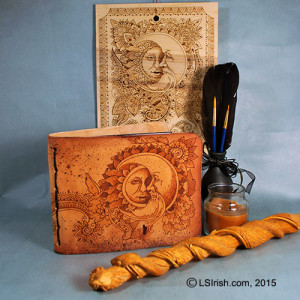 Who?
Who?
Who are you, who are your customers, and who do your customers think you are?
As a free lance artist I have worked in many different crafts over the years. One of my earliest was pin striping and lettering for commercial trucks. I saw myself as a sign crafter, and advertised myself that way on my business cards, letter head, and in my local newspaper. While I did have a small going business I was in direct competition with the larger sign crafting shops in my area. That is until I got a phone call one day from a new client. “Are you that lady that does the tricked-out painting on cars? I have an old pick-up that I want fancied up!”
This gentleman’s phone call woke me up to who my customers thought I was, not who I thought I was. “Are you that lady” told me he was not looking for a business, he wanted one real person for his job. “Tricked- out painting” told me he didn’t want something that everyone else had or that anyone could get through a catalog, he wanted something special made just for him. “Old pick-up truck” told me that he treasured his truck, it was important enough to him to not only keep in excellent condition, but worthy of investing the money for pin striping to make it outstanding. “Fancied up” told me that he wanted bragging rights when he showed off his newly pin striped truck to his family and friends!
His phone call clarified to me how the customers I already had saw me, were talking about me and the work I had done for them. It also gave me the clue as to how to encourage more business by not focusing my sale’s pitch on my own skills as a sign crafter, but on my client’s desire to have their special old truck fancied up and made special.
After that phone call I changed my business cards and advertising from Sign Crafting and Lettering to Have Brush, Will Travel – Trick Out Your Truck Today. Business boomed because I finally was presenting myself to my customers as the person they were looking for to do their job!
Are you an artist, pyrographer, or wood carver or are you that person who will make their desires become real?
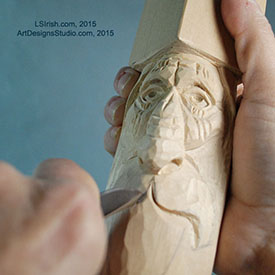 What?
What?
What are you selling and what are your customers really buying?
You may think that what you are selling is your pyrography art or your carved caricatures, but that is not what your customers buy. People do not pay $50 for some little 8″ x 12″ piece of scorched wood or $75 for some 40″ tall walnut sapling stick that you cut down in your wood lot. Would you? No! So what are your customers really buying, what do they really want to buy from you that gets them to open their wallet and put money on your hand?
They are buying things that re-enforce their emotions. For many years I worked in the fine arts focusing on pure bred dogs, doing both limited edition prints and commissioned pet portraits. Limited edition prints for the fine artist allows you to invest your time into one work then reproduce that work to create multiple sales. But those prints never became a ‘hot selling’ item – not because the fine art work was not high quality or not artistically rendered, but because people do not want artwork of someone else’s dog on their wall!
They want pictures of their dog, set in the scene of their backyard, or with the toy they gave their pet that shows their love for their dog. Their dog is not an investment or an object they own, their pet is a treasured, important member of their family. Pet owners seldom purchase limited edition art prints as financial investments that may increase in value over time … they buy pretty pictures of their beloved pet. They buy memories that re-enforce their emotion feelings! So while I did not sell out any of my print runs, those prints were promotional items that kept my bookings for original artwork pet portraits filled.
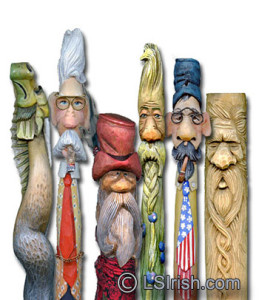 When my husband I ran our dog art website we had an artist submit his limited edition dog art print to us for inclusion on our site. The print featured a particular breed of dog that only had about 500 breeders in the US, with a specific color pattern in a dog breed that had six color variations, seated on a specific brand of motorcycle. With his submission he asked us how many prints we wanted to handle, as he was extremely concerned that his edition was only a 3000 print run. I had the sad task to telling him that while we very much wanted to promote his print we only wanted 3 prints in-house to cover potential sales.
When my husband I ran our dog art website we had an artist submit his limited edition dog art print to us for inclusion on our site. The print featured a particular breed of dog that only had about 500 breeders in the US, with a specific color pattern in a dog breed that had six color variations, seated on a specific brand of motorcycle. With his submission he asked us how many prints we wanted to handle, as he was extremely concerned that his edition was only a 3000 print run. I had the sad task to telling him that while we very much wanted to promote his print we only wanted 3 prints in-house to cover potential sales.
His artwork was spectacular, his skills were superb, the printing and paper was the highest quality, his price range was very reasonable, but the image has four major marketing flaws. To sell that print we needed to find someone that owned that particular breed, in that particular color pattern, that also owned and drove a motorcycle, and a motorcycle that was made by that particular manufacturer … AH! Owners of black Labrador retrievers do not by art featuring yellow labs, and people who drive Harleys don’t put pictures of Yamaha cycles on their walls. We never were able to find the customer that had his specific combination of elements. In contrast one of our best selling dog prints was a small work featuring a non-describe mutt-type puppy chewing on a teddy bear. Why you ask? Because that puppy could have been anyone’s puppy, that teddy bear was a very common pet toy they most likely had purchased for their pup, and it was full of one loving memory moment.
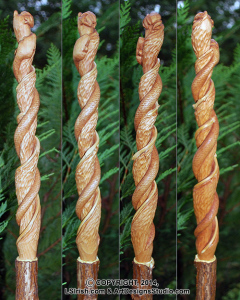 What are your customers really buying at the craft shows?
What are your customers really buying at the craft shows?
They are most likely buying items that re-enforces some particular life choice or sparks an emotional feeling. Your customers are not clients that buy pyrography enhanced wooden kitchen spoons – they are nieces looking for a special gift of love for Aunt Minnie who taught them how to bake Christmas cookies. You are not selling a piece of wood, you are selling a special memory that will be shared between the buyer and his or her gift recipient.
The more you can get that ‘niece’ to share her story about making cookies with her aunt, instead of talking about how you use a specific wood burning technique, the more likely you are to land the sale.
As a wood carver I don’t think I ever really sold a ‘cane’, and never pitched a cane as an orthopedic support. If my customer needed that type of cane they bought them from the medical supply house. What I sold was a fancy stick that let a ‘gentlemen strut his stuff and make his next door neighbor just a bit jealous’ as he took his dog for a walk through the neighborhood. I did not present my walking/hiking sticks as part of their hiking equipment, but as a wood spirit or spiritual companion that went with them into the wilderness on their journey.
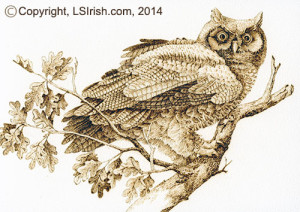 What is the most important item you ‘sell’ at the craft shows?
What is the most important item you ‘sell’ at the craft shows?
Its not some item, its not a tangible finished work, its not that special, extra-hard endeavor that you created … its you and your story!
It had been a long, hot day at our local community yard sale, one of my better selling shows. I was tired, I was ready to go home but I had one more customer waiting to talk with me. So I put on my ‘I am glad you are here’ smile and said “Hi” to the gentleman. Within one minute he was talking about his niece, who was 5 years old, and how his refrigerator was covered with her artwork because he knew one day she would be a great artist – implying that even at 5 she was a better artist than I. OK ?!? For twenty minutes he exclaimed her virtues as a budding Rembrandt, how she could already color inside the lines, and how she loved red. OK ?!? For twenty minutes I listened this man brag about some 5 year old, armed and dangerous, and already a greater artist than I would ever be because he had given her a box of crayolas.
I will honestly admit that his conversation, at first, irritated me just a little bit – maybe more than a little bit – maybe a whole, huge bunch of bits! But after I got home, quieted down, and really thought about what he was telling me I learned one of the most important marketing techniques that I needed to make the sale.
He taught me that every customer buys more than an item, they buy bragging rights. My customer with the 5 year old niece had bought himself bragging rights when he gave her that box of crayons and he was sharing those bragging right with me or anyone else who would listen to him.
Your customers want bragging rights too and they want a story to tell all of their friends about how they discovered this ‘new artist’ or what story you were creating with your burning or carving. Honestly, when you look at any customer through their eyes they really did ‘discover’ you and they are the ones that will carry that word-of-mouth advertising to their family, friends, and co-workers. You want them to have and use their bragging rights!
Your customer wants to talk with their friends about the item they purchased and your story is one way that they can. You can also give them a story about the item they are interested in buying, a story that can become theirs and that they can tell over and over again. After giving my sales pitch about Wood Spirits and how they fit into mythology over and over again at shows I finally wrote it down, printed it, and attached it to all of my walking sticks. Many browsers who came into my booth would stop and read that paper, then buy the stick. They bought two things – a stick and a story to tell.
Each time they tell their story they re-enforce that they are one of your special customers and are more likely to purchase more items from you.
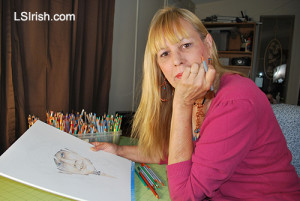 My Experiences on the Whys and Whats
My Experiences on the Whys and Whats
During my craft show years I always displayed several pet scenes, house portraits, and truck or old car scenes, either in wood carving, pyrography, or oils on canvas. But I considered those items as samples to promote commissioned projects, not as direct selling items. I created a photo album that included commissioned works that I had completed for other customers along with the photo of house, pet, and truck portraits – my biggest selling items. That album also had photos of the different styles of walking sticks that I carved and notes about the hiker, where they hiked, and which hiking clubs they held a membership. That photo album was displayed, opened, on the very center front of my selling table where it could catch everyone’s attention. It was my instant advertising that I was willing to do custom work and to get a one-on-one conversation started about what they would want to order if they were making a commissioned order with me.
Also on my table was a full page printed Artist’s Biography that any browser or potential customer could pick up and take home with them. While it did give information about myself as an artist and about my art, it really was a ‘cheat-sheet’ that gave my customers bragging rights information. I even had little pull-off tabs along the bottom edge that included my name, phone number, and art specialty that my customers could give to their friends and family.
If you are like me and have problems ‘bragging’ about yourself ask someone in your family or a close friend to write it for you. You can give them the information details, they will add the impact to those details. Include in the printed bio at least one photo of your best work to show off your specialty, your name, your business name, your website, your Facebook account, and, of course, your phone number.
And, please, remember in writing your bio that Grandma Moses was a farmer’s wife, a self-trained artist, and did not start her art career until she was 78.
Many of my art and craft show did not show a direct monetary return – meaning I did not make many sales of the pieces that I displayed. The chance that I created those specific pyrography burned images that would spark an emotional desire in the browsers of the show was really as low as my finding the customer that fit the dog on the motorcycle print. I might be showing Western scene burns featuring cattle ranching or Rodeo Show riding on the very day that everyone at the craft show happened to be a quilter, a truck driver, or hiking fanatic. Direct sales on larger items can be slim.
I went to craft shows because it put me in a one-on-one connection with potential customers and gave me a chance to engage them in the ‘conversation’ about what they really wanted to buy. I saw my display of finished items more as promotional work to secure commissioned work than direct sales items. And while I often spent more at a craft show than I took in, I always came away with my schedule booked with commissioned projects.
For me, these shows were never about what I could sell, but about how many show browsers that I might be able to turn into new customers!
Hope this gives you some new insight on who you are, who your potential customers are, and how you can turn their desires into sales.